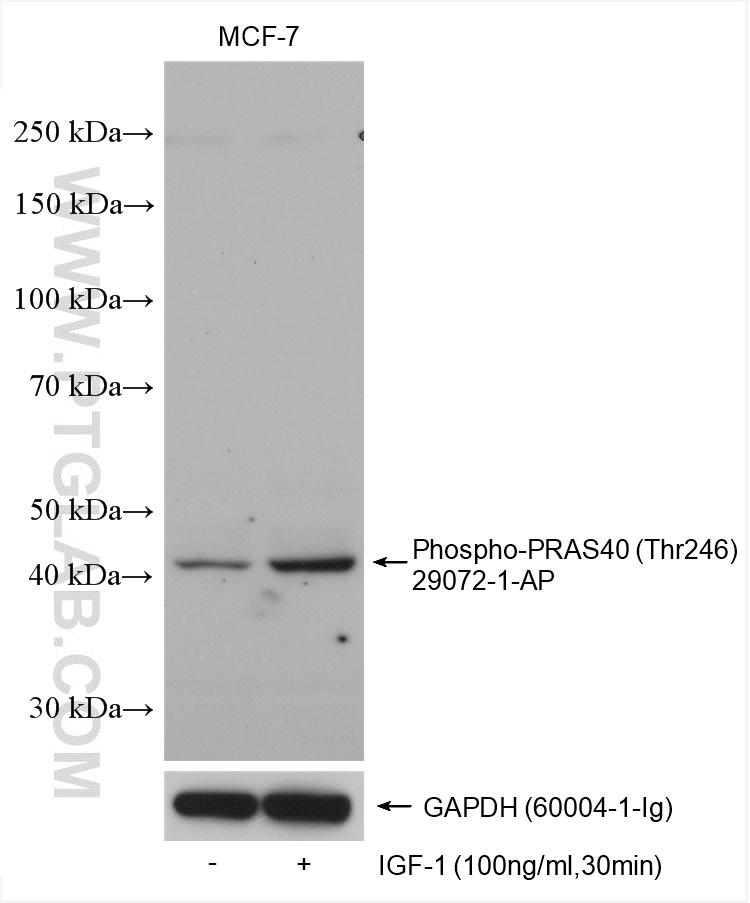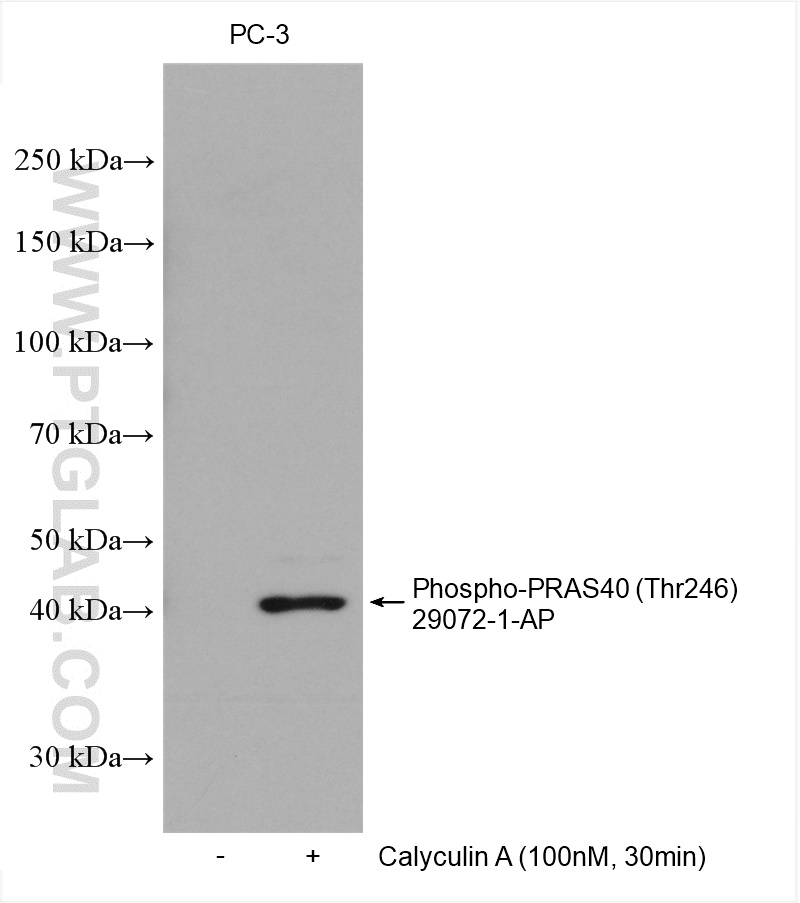验证数据展示
经过测试的应用
| Positive WB detected in | IGF-1 treated MCF-7 cells, Calyculin A treated PC-3 cells |
推荐稀释比
| 应用 | 推荐稀释比 |
|---|---|
| Western Blot (WB) | WB : 1:2000-1:10000 |
| It is recommended that this reagent should be titrated in each testing system to obtain optimal results. | |
| Sample-dependent, Check data in validation data gallery. | |
产品信息
29072-1-AP targets Phospho-PRAS40 (Thr246) in WB, ELISA applications and shows reactivity with Human samples.
| 经测试应用 | WB, ELISA Application Description |
| 经测试反应性 | Human |
| 免疫原 | Peptide 种属同源性预测 |
| 宿主/亚型 | Rabbit / IgG |
| 抗体类别 | Polyclonal |
| 产品类型 | Antibody |
| 全称 | AKT1 substrate 1 (proline-rich) |
| 别名 | AKT1S1, AKTS1, Lobe, Phospho-PRAS40 (Thr246), PRAS40, Proline rich AKT1 substrate 1 |
| 计算分子量 | 27 kDa |
| 观测分子量 | 40 kDa |
| GenBank蛋白编号 | BC051844 |
| 基因名称 | PRAS40 |
| Gene ID (NCBI) | 84335 |
| RRID | AB_2935413 |
| 偶联类型 | Unconjugated |
| 形式 | Liquid |
| 纯化方式 | Antigen affinity purification |
| UNIPROT ID | Q96B36 |
| 储存缓冲液 | PBS with 0.02% sodium azide and 50% glycerol , pH 7.3 |
| 储存条件 | Store at -20°C. Stable for one year after shipment. Aliquoting is unnecessary for -20oC storage. |
背景介绍
PRAS40 is expressed in a variety of tissues in vivo and has multiple phosphorylation sites, which its activity is closely related to phosphorylation. Studies have shown that PRAS40 is involved in regulating cell growth, cell apoptosis, oxidative stress, autophagy and angiogenesis, as well as various of signalling pathways such as mammalian target of mammalian target rapamycin (mTOR), protein kinase B (PKB/Akt), nuclear factor kappa-B(NF-κB), proto-oncogene serine/threonine-protein kinase PIM-1(PIM1) and pyruvate kinase M2 (PKM2). PGK1 phosphorylated PRAS40 at Threonine 246, which could be inhibited by blocking the interaction. PRAS40 can be phosphorylated by p-AKT at Thr246 site and promote the signal downstream to the mTOR signaling pathway. (PMID: 35058442, PMID: 32855714)
实验方案
| Product Specific Protocols | |
|---|---|
| WB protocol for Phospho-PRAS40 (Thr246) antibody 29072-1-AP | Download protocol |
| Standard Protocols | |
|---|---|
| Click here to view our Standard Protocols |

